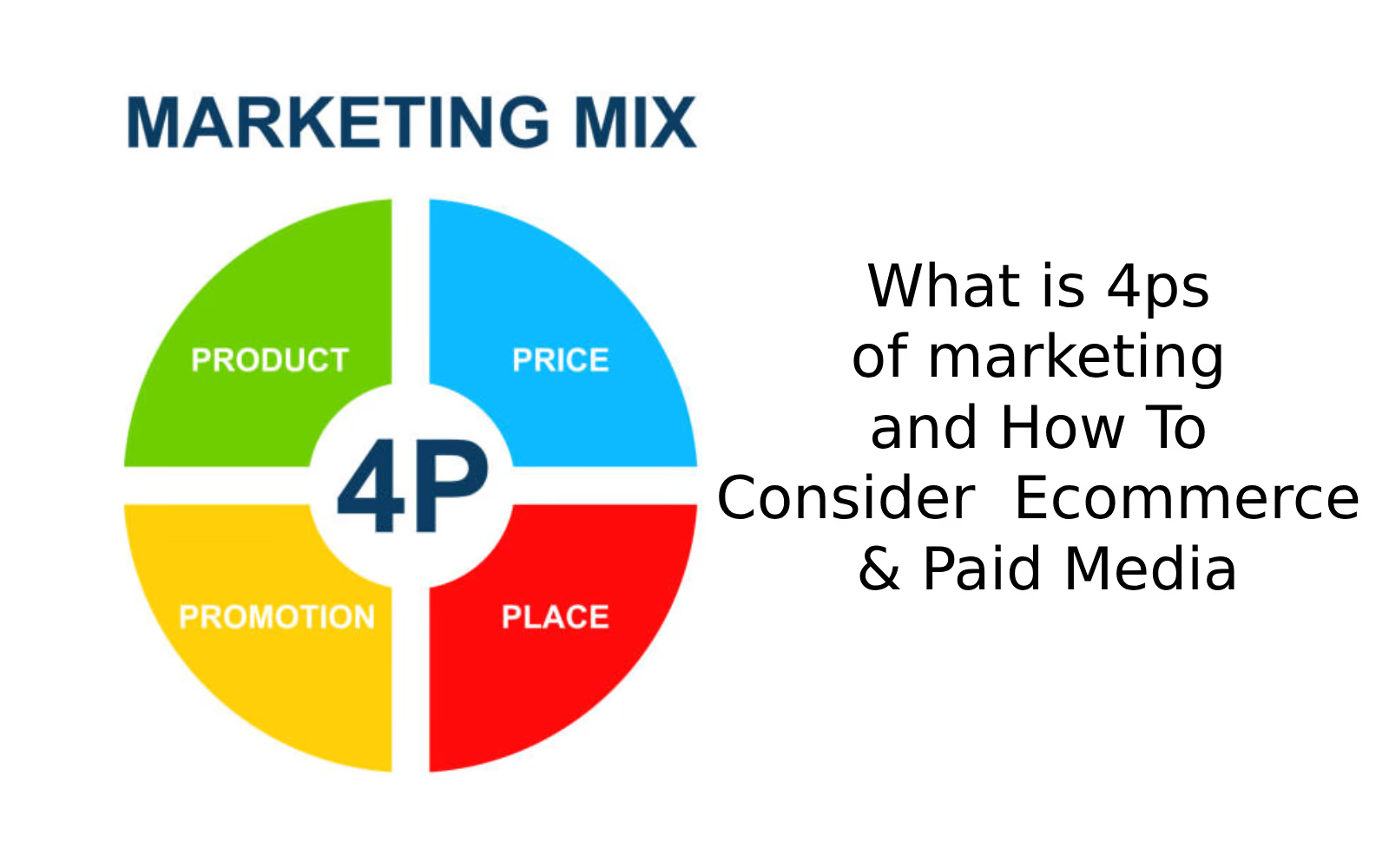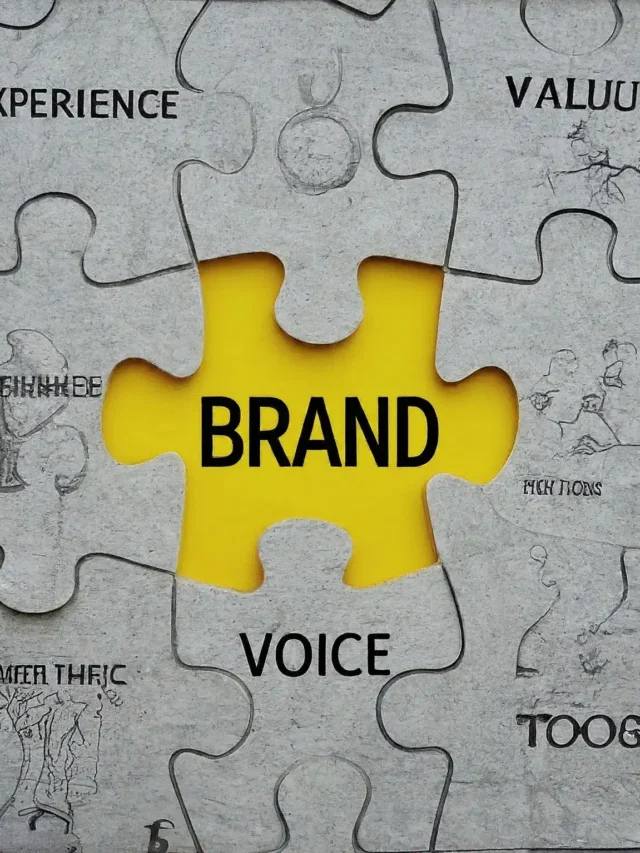4Ps of Marketing and How to Keep E-commerce & Paid Media in Mind
In marketing, effective strategies and tools can be the key to success. One of the key models is the 4Ps—Product, Price, Place, and Promotion. This model provides a strong foundation for successfully presenting any product or service. By using each element correctly, companies can effectively market their products and services to customers and increase their sales.
In today’s digital age, E-commerce and Paid Media help make every element of this model even more effective. E-commerce platforms deliver products to online audiences and facilitate the customer’s purchasing process. At the same time, through paid media, you can make your marketing activities targeted and effective, which increases the visibility and recognition of the product in the market.
In this article, we will take a deeper look at this important model of the 4Ps and see how E-commerce and Paid Media can be incorporated into these 4Ps. With this understanding, you can implement your marketing strategies more effectively and holistically.
What is Marketing?
Marketing is the process through which companies try to deliver their products or services to customers. Its main objective is to understand the needs and desires of customers and present them with products or services that can solve their problems or meet their requirements. Marketing is not limited to advertising or promotion only. It includes many activities like market research, product development, pricing, distribution, and customer service. The purpose of all these functions is to satisfy customers and keep them associated with the company for a long time.
Under marketing, customer requirements and market trends are understood through market research. After this, the design and quality of the product are worked on in the process of product development. In the pricing stage, the right price is determined for the product, while the distribution process ensures that the product or service reaches the customers at the right time and place. Product information is conveyed to customers through promotion and advertising so that sales can be promoted. Finally, good relationships with customers are maintained through customer service, which increases their satisfaction and brand loyalty. Thus, marketing is a holistic process that not only helps in increasing sales but also builds strong and long-lasting relationships with customers.
What are the 4Ps of Marketing?
The 4Ps of Marketing is a basic framework that is used to successfully establish any product or service in the market. The importance of this model lies in the fact that it strengthens the foundation of any marketing strategy. Whether you are launching a new product, or want to boost the sales of an existing product, the right balance of the 4Ps is essential. Product, Price, Place, and Promotion—these four elements together ensure that your customers are attracted to your product or service most appropriately by understanding their requirements. In this introductory article, we will learn about these 4Ps in detail and understand how they form the core of any successful marketing campaign.
Product
The product is the first and foremost element in the 4Ps of marketing. It is the product or service that you offer to the customers. The basis of any business is its product, as it is the thing that fulfills the customer’s needs or solves his problems.
While designing and developing a product, several important aspects are taken into consideration, such as its quality, features, branding, packaging, and customer expectations. A successful product is one that not only fulfills the customer’s needs but also satisfies them and keeps them engaged with your company for a long time.
Apart from this, the uniqueness and innovation of the product also help it to take an edge over the competition. For example, if your product is different from other available options or has a unique feature, it can easily create recognition among customers.
In short, the product is the basic element that determines the success of any marketing strategy. Hence, it is important to keep in mind the customer needs and market trends while developing it.
Price
Price is the second important element in the 4Ps of marketing, which refers to the price that customers will pay for your product or service. It is not just a number but is based on many factors, such as production costs, competition’s pricing, market demand, and customers’ paying capacity.
When planning a pricing strategy, you have to ensure that your product is neither priced too high, which will make customers reluctant to buy it, nor too low, which will affect your profits. Proper pricing means that you can strike a balance between the quality of your product and its price so that customers feel that they are getting the right value for their money.
In addition, pricing also impacts brand positioning. If you want to position your product in the premium segment, then your pricing should be high, which indicates that your product is of high quality and features. On the other hand, if you are targeting the mass market, then your pricing should be in line with the competitor and customer expectations.
Various strategies can be adopted when setting pricing, such as discounts, offers, bundling, and premium pricing. It is also important to ensure that the pricing is flexible so that you can adjust it according to changes in the market or the activities of the competition.
Ultimately, correct pricing plays a key role in the success of your product, as it directly influences the customer’s purchasing decision.
Place
Place is the third important element in the 4Ps of marketing, which refers to where and how your product or service will reach customers. It is also called a distribution channel. The main purpose of the place is to ensure that your product or service is delivered to customers at the right time, in the right place, and in the right way.
Many factors have to be taken into account when selecting a place, such as your target market, the geographical location of customers, and your presence in the market. For example, if your product is a consumer good, it is important to make it available at grocery stores, supermarkets, or online platforms. On the other hand, if you are selling any industrial equipment, then you may have to make your product available through merchant sellers or specialized distributors.
In today’s digital age, place does not mean only physical stores. E-commerce platforms, mobile apps, and social media channels have also become an important part of place. These digital platforms allow customers to shop anywhere and anytime, thereby widening the reach of your products.
The right selection of place directly affects your sales. If your product is not available in the places where your target customers expect to buy it, it can reduce your sales opportunities. Therefore, you must ensure that your distribution network is effective and the availability of your products is in line with the needs of the customers.
In summary, place is the element that ensures the availability of your product and its reach to the customers. With a strong and comprehensive distribution strategy, you can be successful in making your product reach more and more customers and strengthen your presence in the market.
Promotion
Promotion is the fourth and last important element in the 4Ps of marketing, which deals with making customers aware of your product or service and motivating them to buy it. The main purpose of promotion is to establish effective communication with customers so that they can understand the benefits of your product or service and decide to buy it.
Promotion includes many activities, such as advertising, public relations, personal selling, and sales promotion. The purpose of all these is to ensure that your product or service comes to the attention of customers in the market and increases their interest.
1. Advertising: Advertising is the most common and effective promotion tool, through which you can reach your product to a large audience. This can be done through various mediums such as TV, radio, print, online, and social media. The main purpose of advertising is to increase brand awareness and attract customers to your product.
2. Public Relations: The purpose of public relations is to create a positive image of the company and its products. This may include press releases, media coverage, events, and sponsorships. Public relations helps the company to increase trust and credibility towards its brand.
3. Personal Selling: This is a direct promotion method in which sales representatives interact with customers personally to explain the benefits of the product and motivate them to buy it. Personal selling is most effective when your product is high-priced or has complex technical specifications.
4. Sales Promotion: This includes coupons, discounts, offers, and special promotional events that encourage customers to make immediate purchases. The main purpose of sales promotion is to motivate customers to take immediate action, such as limited-time offers or special discounts.
In the digital age, new promotional tools such as social media marketing, content marketing, and email marketing have also emerged that help reach customers directly and effectively.
The right and balanced use of promotions ensures that your product not only catches the attention of customers but also motivates them to buy it. With a strong promotion strategy, you can not only increase your sales but also strengthen your brand identity and market position.
How to incorporate E-commerce and Paid Media into the 4Ps?
E-commerce and paid media have become essential tools for effectively implementing the 4Ps of marketing in today’s digital age. Both of these elements help you market your product to the right audience and motivate them to buy. Let’s see how e-commerce and paid media can be incorporated into each element of the 4Ps:
1. Product:
The way products are displayed on e-commerce platforms is very important. In the digital medium, your product images, descriptions, and customer reviews are what define your product. You should use high-quality photos, detailed product descriptions, and videos to make your product’s online presence attractive and informative. Using paid media (such as social media ads or Google AdWords) can help you highlight your product’s features and effectively communicate your offerings to customers.
2. Price:
Pricing on e-commerce platforms is very competitive, so you have to adjust the pricing strategy of your product according to the online market. Customers usually compare prices when shopping online, so you have to adopt the right pricing model. Through Paid Media, you can promote special discounts, offers, and bundle deals, which can motivate customers to buy based on price sensitivity.
3. Place:
E-commerce itself is an important “place” where customers can see and buy your product. Your product should be available on platforms where your target audience is most active, such as Amazon, Flipkart, or your website. Along with this, through Paid Media, you can increase the online visibility of your product, so that more and more customers come to your website or e-commerce store.
4. Promotion:
E-commerce and Paid Media are the most effective mediums for promotion. You can use social media platforms (such as Facebook, and Instagram), search engine advertising (such as Google Ads), and display advertising. These digital mediums are capable of quickly reaching the right audience with your product and motivating them to make a purchase. Also, using tools such as email marketing, remarketing, and influencer marketing, you can target customers repeatedly and encourage them to make a purchase.
Conclusion:
E-commerce and paid media are extremely important tools for effectively implementing each element of the 4Ps of marketing—product, price, place, and promotion. E-commerce platforms not only make your products accessible to a wider audience but also facilitate the customer’s purchasing process by presenting them in the right way. At the same time, through paid media, you can make your marketing strategy targeted and effective, which significantly increases the visibility and sales of your products.
The integrated use of e-commerce and paid media along with the right presentation of the product, competitive pricing, appropriate distribution channels, and effective promotions helps you to build a strong presence in the market and establish a better relationship with the customers. The right and strategic use of these digital tools can give a new direction and momentum to your marketing efforts, making it simple and effective to achieve your company’s goals.
Ultimately, a successful marketing strategy establishes a strong connection between the product and the customer and makes this relationship even stronger through e-commerce and paid media. This is why using these modern technologies in the right way is the key to success in today’s competitive market.










